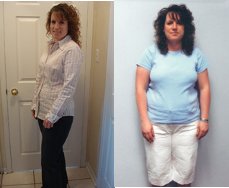By Isagenix Nutritional Sciences
 Emerging clinical research over the last decade has sparked enormous interest in the “sunshine vitamin” because of new associations with bone density, a stronger immune system, a healthier heart and brain, and maintenance of cell integrity. The hormone-like vitamin is noted to have direct effects on cells throughout the body and act on more than 2,000 genes.
Emerging clinical research over the last decade has sparked enormous interest in the “sunshine vitamin” because of new associations with bone density, a stronger immune system, a healthier heart and brain, and maintenance of cell integrity. The hormone-like vitamin is noted to have direct effects on cells throughout the body and act on more than 2,000 genes.
For this reason, the Institute of Medicine, of the National Academy of Sciences, was asked by the United States and Canadian governments to assess current data and subsequently tasked a committee of experts to update nutrient reference values.
The IOM committee did as asked and has now tripled the recommended dietary allowances (RDAs) for vitamin D in ages 9 to 50 to (600 IU) and raised amounts even further for those ages 70 and older (800 IU). Also, it doubled the upper level (UL) intake for vitamin D (4000 IU).
However, the new guidelines for vitamin D came as a disappointment to key vitamin D researchers who consider the report too conservative to deal with a widespread epidemic.
The influence of sun exposure in itself, which causes the skin to generate the equivalent of a whopping 20,000 IU to 40,000 IU of vitamin D within only a few minutes depending on season and time of day, has now been highly regarded as having had a profound and crucial role in preserving health, beyond the needs to regulate absorption of calcium.
“A stern rebuke”
Scientists of the Vitamin D Council expressed what Science News reports as a “stern rebuke” toward the committee for what they see as “woefully inadequate.”
According to the news source, vitamin D expert Bruce Hollis, a professor at the Medical University of South Carolina, said the report was a “big waste of money,” and he only agreed with the panel’s decision to double recommendations for infants.
The news source also reported that Robert Heaney, of Creighton University, said, “I don’t think this does anything to create confidence in IOM recommendations.”
Additionally, Michael Holick, of Boston University Medical Center, who has reasearched vitamin D for more than 30 years, told Isagenix in a recent interview that he hoped the UL would be raised to 10,000 IU.
He said that this amount would allow more to be put into foods like milk and orange juice that would be necessary to have a real impact on the entire U.S. and world population. In his recently published book, The Vitamin D Solution, Holick cites evidence that:
- Half of all children in the US and Europe are vitamin D deficient at some time, but almost every single one has vitamin D insufficiency.
- Over the last 10 years vitamin D levels have been reduced by 22 percent in the US
- Last year, a study published in Archives of Internal Medicine, showed 70 percent of whites, 90 percent of Hispanics and 97 percent of blacks in the US have insufficient levels.
- Even near the equator (where you’d think people get plenty of sun –think Saudi Arabia, India, Australia, Brazil, Mexico – between 30 and 80 percent of children and adults have deficient or insufficient levels of vitamin D.
- Three out of four people in the US are deficient in vitamin D, and most have insufficient levels. Twenty years ago it was only 1 out of 2.
New research has linked several common problems of poor health and accelerated aging to one single thing – vitamin D deficiency or insufficiency
Vitamin D deficiency is defined as a blood level below 20 nanograms per milliliter (ng/ml) and insufficiency is defined as a level between 21-29 ng/ml. For optimal vitamin D status, the ideal range is 40 ng/ml.
Holick told Isagenix, “If a normal adult isn’t taking at least 1,500 to 2,000 IU from supplements and diet—and you can’t really get it from diet—we know you’re vitamin D deficient.”
Despite the data, the IOM reported that most people in the U.S. and Canada should be able to obtain sufficient amounts from their diet—from milk, fish, and other sources—to meet Dietary Recommended Intakes (DRIs), assuming no other vitamin D was synthesized from the sun in the skin.
IOM committee scientists, in a press conference, allowed that the new recommendations were perhaps overly conservative in light of new research as well as research to come.
But the committee’s chair Catharine Ross, of Penn State, said that, after reviewing more than 1,000 published studies, they concluded that there was still yet not enough research available to warrant RDAs and ULs to be raised any higher.
The role of supplements
Despite headlines from the New York Times and several other news outlets, the IOM committee voiced that they did not intend for any negative press against vitamin D supplements.
They clarified that they did not specify where the vitamin D amounts should come from—whether it be from the sun, supplements or diet—just as a total amount.
But, it’s known that most people do not get enough from the diet.
Oncologist Steven Clinton, of Ohio State University, added that, “Especially in Canada, we don’t want to close the door on those supplements.”
Because Canadians live at a higher latitude, they are more at risk for lower vitamin D levels, particularly during the winter months.
Others at high risk for low vitamin D include the elderly, people with darker skin, and people who stay indoors most of the time.
Indeed, the scientists of the Vitamin D Council organization, such as John Cannell and Hollis, have long recommended supplementing with intakes of 5,000 IU (or higher in certain situations, such as obesity) to maintain a blood level range at 50-80 ng/mL (or 125-200 nM/L) year-round.
Holick, who has been studying the vitamin for more than 30 years, routinely prescribes 2-3000 IU to his patients for optimal health of bones, the heart, and immune system.










